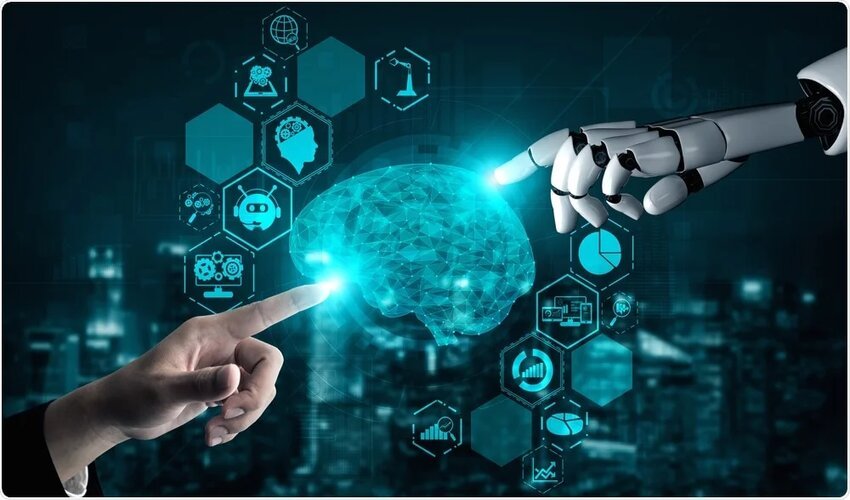AI is being used by software developers to ensure high levels of accuracy and productivity. According to Venkat Chaganti, managing director at professional services firm Deloitte, “Quality assurance has been manual for the majority of software development, but in recent times, we’ve moved from manual to autonomous and incorporated AI into the process.”
The use of AI in quality assurance extends to other industries. As products and parts move through production lines, AI takes the place of human inspections. Computer vision and deep learning models are frequently utilized by AI-powered systems to detect defective items and scan and analyze components about established standards. All of this improves productivity on production lines and reduces employee burnout.
An autonomous QA workflow is created when an AI system is incorporated into the QA procedure. As long as leaders are aware of its potential obstacles and how to implement them, this can benefit businesses.
How Companies Can Attain Autonomous QA Workflow?
Software quality assurance, or SQA, verifies that every step in the software engineering process complies with predetermined standards and contributes to the creation of a high-quality product.
Analysis and specification of requirements, design and development, testing and deployment, and SQA are all involved. As a result, all phases of the software development lifecycle include quality assurance. Testing ought to be incorporated into the development process throughout.
Throughout this lifecycle, testing is one aspect of SQA that can be automated. Because it facilitates continuous testing and continuous integration, testing automation is an essential component of Agile development environments. For this reason, organizations keep on looking for the best qa companies across the globe.
Compared to a manual procedure, automated testing, in which humans write scripts for each test scenario, is quicker. However, autonomous testing, the next level of automation maturity, is not the same as automated testing and does not move as quickly. In autonomous testing, automated testing tools and other technologies, such as artificial intelligence (AI) and machine learning (ML), are used to create and carry out the testing procedure without the assistance of any humans.
Advantages of Artificial Intelligence In Quality Assurance
For quality assurance, autonomous testing can offer numerous advantages. Because the testing process is accelerated by autonomous testing, developers and engineers can reduce product release times.
A higher level of cost-effectiveness and overall increased effectiveness are two additional advantages of autonomous testing. ML algorithms design and execute tests when utilized in autonomous testing. Algorithms are also used to analyze results in AI technology. In addition, it can iteratively refine those steps and learn from those experiences. For this reason, best qa companies give a lot of importance to such factors.
A software QA engineer must develop various test scenarios and test everything connected to them. That’s a lot of work,” stated Kavita Ganesan, founder of the AI consulting firm Opinosis Analytics and AI adviser, strategist, and strategist. Ganesan stated, “AI can automate the creation of test cases that have been validated by engineers.” Albeit a human actually should be in the know to approve that these experiments are correct, the man-made intelligence unquestionably lessens the responsibility.”
Other essential functions, such as bug detection and root cause analysis, are carried out by AI in autonomous testing. Before deploying the code, developers can fix bugs, which improves overall process efficiency.
Sreekanth Menon, vice president and global leader of AI/ML services at Genpact, stated, “With artificial intelligence, the quality assurance for software is much better.” You can now create synthetic data to test the software and ensure a high-quality product.” For training models, synthetic data sets are realistic substitutes for real-world data sets.
Difficulties for Artificial Intelligence in SQA
Businesses need time to fully develop their testing procedures. According to the configuration software developer Perforce Software’s report titled “2023 State of Test Automation,” 22% of the DevOps professionals who were surveyed cited a lack of resources for test automation as a challenge.
There are difficulties associated with incorporating AI-powered autonomous testing into an overall SQA program. Setting up the AI component and effectively training the AI models is one such obstacle.
Arthur Carvalho, an associate professor of information systems and analytics at Miami University’s Farmer School of Business, stated, “The model will only be as good as the data used to train it, so if the data isn’t high quality, then the results won’t be accurate.”
AI models can change over time, even if the training data was solid. Additionally, QA standards can change, requiring model modifications.
Carvalho stated, “We have to monitor our AI models to make sure they are still working as intended.” This is in addition to monitoring the quality of the product.
It might be hard for businesses to hire teams with the right skills to keep an eye on the AI-powered systems’ results.
When an organization first implements an autonomous QA workflow, these obstacles will be obvious, but they can be overcome.

Aimee Garcia is a Marketing Consultant and Technical Writer at DailyTechTime. She has 5+ years of experience in Digital Marketing. She has worked with different IT companies.



